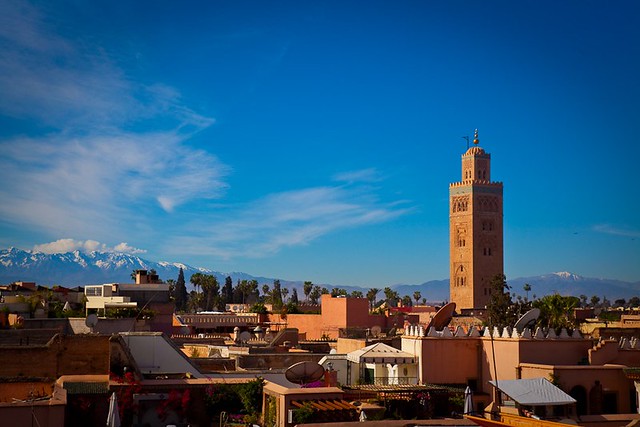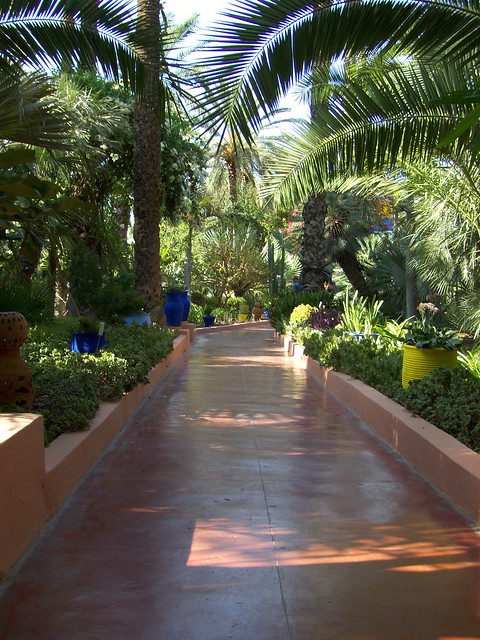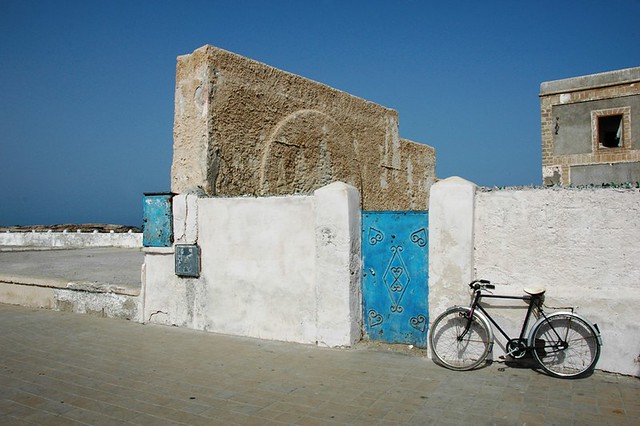 GO TO MOROCCO
GO TO MOROCCO Out of the blue a friend called me and told me that she had four free days, had found a great deal to go to Morocco and asked would I fancy to come too? Did she even have to ask? I was already throwing things in my bag before the conversation was over.
Out of the blue a friend called me and told me that she had four free days, had found a great deal to go to Morocco and asked would I fancy to come too? Did she even have to ask? I was already throwing things in my bag before the conversation was over.

Marrakesh, Morocco
She came from London and I came from Istanbul and we met up in Marrakesh. We are both glamour grannies which means we aren’t into backpacking and dorms, we need our creature comforts but are always extremely keen on discovering a country’s less traveled and beautiful secrets. We will go anywhere, eat just about anything and don’t much need R&R. Morocco proved to be the ideal destination.
We stayed in a beautiful little hotel, a converted Riad located in the middle of the twisted and mysterious alleys of the medina (which means “old city proper.) . After exploring the old town and soaking up the atmosphere of shouting water vendors with their tasseled hats and black-veiled women, we couldn’t resist making our way to the legendary Mamounia Hotel. Staying there was out of the question, but to our delight we found out that you can enjoy the ultimate in luxury and wallow in the history of the place by buying a day pass for approx. $100. That was well within budget, so we put on our best leisure outfits and smartest bikinis and were ready to mix with the wealthy and beautiful.
The Mamounia Hotel has recently undergone a massive ‘facelift’ and it shows. Step into the lobby and your are right in the middle of a 1001 nights tale. Morocco is the country of roses and they were everywhere. I had the good fortune to meet the PR lady, and when she heard that I was a travel writer we received the benefit of a guided tour, plus free cocktails in the piano bar ,and dinner in one of the five themes restaurants. Oh for the perks of travel writing.

Exotic garden in Marrakesh
The hotel’s most outstanding feature is the gardens. Acres and acres of exotic plants and flowers, palm trees and well tended lawns, interspersed with kitchen gardens which provide the herbs and spices for the restaurants. My friend, a keen gardener, couldn’t tear her eyes away.
“Do you think they have an opening here for a garden assistant?” she joked. Highly unlikely, so we made our way to the pool, which is massive and surrounded by the most comfortable loungers I’ve ever rested in.
Of course, no one has to lift a finger. Everything is fetched and carried for you, including refreshments from the pool bar. I had forgotten suntan lotion, and a bottle was bought and brought to me by one of the pool boys. Heaven. We spent a wonderful day, chatting with other hotel guests who came from all over the world, many of them regulars who wouldn’t dream of staying anywhere in Marrakesh but the Mamounia.
Evening fell and we enjoyed our cocktails in the piano bar and then proceeded to the Morocco restaurant to sample a very succulent tagine which was celebrated at the table along with a glass of outstanding red wine. That was our bit of R&R, because the next day we went on an adventure trip which will not soon be forgotten.

Road through the Draa Valley towards Ouarzazate
Our destination was Ouarzazate, known as the door to the desert, located only about 150km east of Marrakesh, but what 150km these were. The road to Ouarzazate winds its way across the highest peeks of the Atlas mountains before dropping down into the desert. The journey is not for the faint hearted, but the views down into the hibiscus and rose covered Drâa River Valley are simply breathtaking. Wisely, we had hired a car and driver for the day, because you can’t drive and look at the same time, otherwise you easily can have taken the last look of your life; the road is that dangerous.
Our driver was, as he proudly pointed out, a native Berber and negotiating roads like that runs in the blood. Stalls line the road where you can buy huge chunks of sparkling minerals found in the desert. After passing by the massive fortified mountain Kasbah of Ait Benhaddou which is a world heritage site and crossing the snow line, we descended into Ouarzazate, not only the gateway to the desert, but also a center of movie making.
Such classics as Lawrence of Arabia, Gladiator, The Mummy and many more have all been, in part, shot there, using the natural background and several studios. You can visit the studios and a movie museum, but I preferred to make my way to the Hotel Berbere Palace. Apart from being a place where we could rest and swim in the pool, again making use of a day pass, the hotel is famous for its collection of original props of the movies, displayed in the lobby and throughout the grounds. It’s quite an experience to actually touch the throne ‘Caesar’ sat in, or to look at the cage from Planet of the Apes.

Cashbah Taouririt has been featured in several movies
Refreshed, we went for a walk through Ouarzazate’s very own medina, the red Cashbah Taouririt, also featured in several movies and a wonderful place to admire or shop for lovely Morocco souvenirs like miniature tagines or leather goods. We made the return journey by night and as it happened, we had a full moon which cast the mountains into a simply magic light.

Moroccan souvenirs in and around Cashbah Taouririt in Ouarzazate
Next day’s destination was nostalgia of a different kind and in the opposite direction. Our faithful and trusted driver picked us up at 8am and took us along a razor straight highway to the coastal town of Essaouria of faded hippy charm.

Essaouria, or "city of winds," is a surfer’s paradise on the Mediterranean
‘City of the winds’ is the moniker for Essaouria, a surfer’s paradise on the Mediterranean. Sure enough, the first thing you see when approaching are miles and miles of white beach with crashing waves and hundreds of colored wind surfer sails rushing in the strong wind. Essaouria is a walled city and the first stop, outside, is the port and the fish market, where you sit on long communal tables, point at the latest catch and enjoy the freshest of fish, eating with your fingers, in the company of your fellow travelers.

Street Musicians in traditional costume at Essaouria
We made our way through one of the many arched gates into the medina proper. Faded charm is the key word for this place, once the favorite hang out of Jimi Hendrix and Orson Welles. Essaouria is artistic and many art galleries and craft shops line the cobbled alleys. The atmosphere is totally laid back, a far cry from the hustle and bustle of Marrakesh. Paint is a little peeling, windows and doors are a little askew, but you lose all sense of time or urgency whilst meandering through the streets, looking at the merchandise on offer and stopping in one of the many cafes for a mint tea, and listening to street musicians in traditional costumes play their strangely touching wailing melodies on old instruments.

The Essaouira is laid back and a far cry from the hustle and bustle of Marrakesh.
Four days in Morocco was indeed a trip full of contrasts, which is the very essence of the country. Rare are such small places that have it all: mountains, sea, desert, rivers and lush valleys blanketed in roses, culture and ancient history. If you ever have the opportunity to go to Morocco, do it!

























